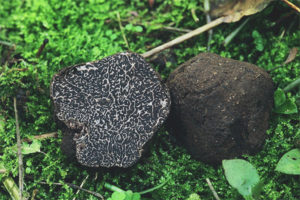The content of the article
Today we are considering another representative of the Fomitopsis family. The fruit body is called an oak sponge due to the characteristics of growth and external data. To make your own opinion about this representative of the family, we will study it in more detail.
Description
- The discussed variety of fruiting bodies exists for a long time, can live up to 4 years, parasitizing on a tree. These mushrooms are lonely in nature. Sometimes they grow together, forming groups. The format of the fruiting body is ungulate, open or in the form of a cut triangle with several layers.
- The diameter of the sponge grows to 20 cm. With a thickness of 7 cm. The fruit body is tightly attached to the tree. The hat bends slightly and sticks out. In the area of its foundation there are bumps and bumps. The structure itself with wrinkles resembles a sponge. It is painted brown, cream or ocher. There are also smoky and gray sponges.
- The soft part is yellow-brown, buffy, quite compacted. When cut, it looks ragged. The structure itself is cork, the smell is distinct, mushroom. On the edges of the apex there are rounded pores, they can be elongated. They pass to the main part by some convolutions, which are connected by thin partitions.
Growth
- As can be understood from the name of this variety, the sponge prefers to live on oak. In some cases, there may be exceptions in which mushrooms are located on the chestnut and poplar. Fruiting is carried out year-round. Ultimately, the fruiting body will grow to a decent size, growing every year.
- You can find these instances in various parts of the globe. They are not uncommon and common everywhere. The main thing is that the growth environment falls under some criteria. On living trees, these sponges are rare, but this happens.
- Basically, they settle in the lower part of the affected trunk. They can rise 1 or 2 meters higher, some specimens are located at a height of up to 5 meters. Parasitic fungi harm trees.
Interesting Facts
- The most common variety of polypore, which negatively affects the state of wood stored in the warehouse. If it has not yet been processed, and the mushroom has already “warmed up”, then it will ruin the tree. Because of these specimens, ordinary trees become brown rot and die.
- Previously, this fruiting body was used to comb the horse's tail and mane. It's all about compacted pulp. Since ancient times, people containing an apiary burned sponges because their smell reassured bees, harvesting went better.
Characteristics
- It is worth mentioning the taste of the oak sponge. It is important that fruiting bodies are not classified as poisonous mushrooms. However, such instances do not consume food. The problem is they taste rather unpleasant.
- Despite the inedibility, the oak sponge has a lot of healing qualities. It contains bioactive compounds in the form of Dedalin A and Quercinol. When isolating such substances, they showed excellent anti-inflammatory and antioxidant activity.
- Fruit bodies are successfully used in folk medicine. Healing broth helps to cope with Botkin's disease. Such a therapeutic agent is recommended to be taken three times a day. It is best to carry out such a procedure 1 before eating.
- If you are going to procure specimens for medicinal purposes, you should know about the rules for collecting and harvesting fruits. For such cases, it is best to give preference to young fruiting bodies. They should not be older than 2 years. From such mushrooms, decoctions can be prepared.
- As mentioned earlier, the considered fruits of the mushroom kingdom are not used in any way in the culinary sphere. The only exception is mushroom powder, which is used to brew medicinal tea.
Similar view
- As for similar species, the white house mushroom is similar to the fruiting body under consideration. Such an instance is considered very common. However, the white house mushroom contributes to the destruction of conifers. Because of it, white rot forms.
- In ceps, fruiting bodies do not develop for more than 1 year. Over time, they can grow up to 20 cm in diameter. Such specimens are very thick and tough. The surface with spores is cream or light brown in color.
- House mushrooms form a very powerful mycelium. It remains interesting that such instances develop, it would seem, in unsuitable conditions for this. Mushrooms grow with dead air, high humidity. In this case, the sun's rays are completely absent. Such fruiting bodies quickly destroy wood.
The fungus is not consumed by humans for food, but its valuable chemical composition encourages pharmaceutical companies to use the fruit bodies in question in the manufacture of medicines.











Submit